Formation and Early Training
The 2/1st Australian Machine Gun Battalion was established on 14th December 1939 as part of the 6th Division, part of the Second Australian Imperial Force (2nd AIF). This formation followed a reorganisation of the division’s infantry battalions, consolidating their machine gun platoons into a single unit. The concept of machine gun battalions had its roots in the Gallipoli Campaign of 1915 and had evolved through the Western Front during World War I. However, it wasn’t until the looming threat of World War II that Australia revived this structure, raising several machine gun battalions within the Militia and the 2nd AIF.
Under the command of Lieutenant Colonel Claude Prior, the battalion comprised four machine gun companies (A to D), a headquarters company, and was equipped with 48 Vickers medium machine guns. Initial training took place at various locations across Australia, including Ingleburn in New South Wales and Puckapunyal in Victoria, culminating in a period of intense training at Ingleburn before their deployment overseas.
Deployment to Britain
Initially destined for the Middle East, the battalion’s convoy was redirected to Britain in mid-1940 to bolster defences following the fall of France and the Dunkirk evacuation. Arriving in Gourock, Scotland, on 16th June, the battalion moved to Tidworth Camp on Salisbury Plain. They spent several months in Britain, training and preparing for a potential German invasion, before finally receiving orders to move to the Middle East in November 1940.

Middle East, Greece, and Crete Campaigns
The battalion arrived in Egypt at the end of December 1940 and trained in desert warfare, which was slightly less useful as they were deployed to Greece to support the 6th Division in March and April 1941. During the Greek campaign, the battalion’s companies were spread across various units, engaging in significant actions before being forced to evacuate as the German forces advanced. Many of the battalion’s men were evacuated to Crete, where they faced further combat during the German airborne invasion. They fought alongside the 2/1st and 2/11th Battalions at Rethimno, where they successfully defended that airfield against German parachute landings. The battalion suffered significant losses, with many men captured or killed during these campaigns.
Rebuilding in the Middle East
After Crete, the surviving members regrouped in Egypt and then moved to Palestine for leave and reorganisation. They later camped in Syria, performing garrison duties until early 1942. With Japan’s entry into the war, the battalion was ordered back to Australia, arriving in March 1942.
New Guinea and Borneo Operations
Back in Australia, the battalion underwent jungle training in Queensland. In late 1942, elements of the battalion were deployed to New Guinea. A and B Companies saw action around Wau and Nassau Bay, supporting the 3rd Division against Japanese forces during the Salamaua-Lae campaign. The entire battalion reunited in New Guinea in May 1943, taking defensive positions until their return to Australia in February 1944.
Final Campaigns and Disbandment
In 1944, the battalion trained in amphibious operations in preparation for the reoccupation of Borneo as part of Operation Oboe. They landed at Balikpapan on 1st July 1945, providing crucial fire support during the campaign. With the war’s end, the battalion’s ranks thinned as men were discharged or transferred. The remaining personnel returned to Australia in December 1945, and the battalion was officially disbanded on 26th January 1946.
Throughout its service, the 2/1st Australian Machine Gun Battalion played a vital role in various theatres of World War II. The battalion’s contributions were significant, despite the initial misunderstanding and underutilisation of their capabilities. Over 2,000 men served in the battalion, with 34 killed in action or dying from wounds or accidents. Decorations awarded included two Military Crosses, four Military Medals, one British Empire Medal, and 16 Mentions in Despatches.
Men of the 2/1st Machine Gun Battalion
Staff Sergeant Leslie Frederick Hoy
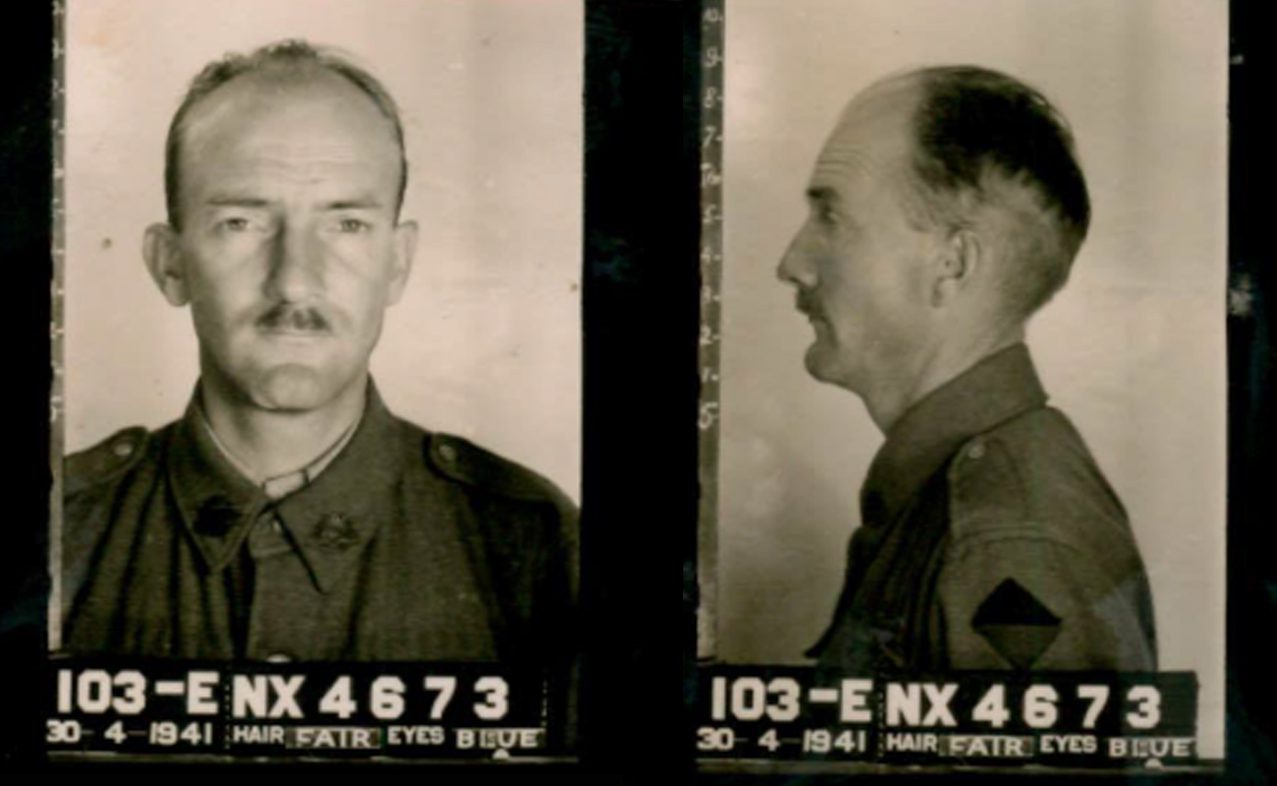
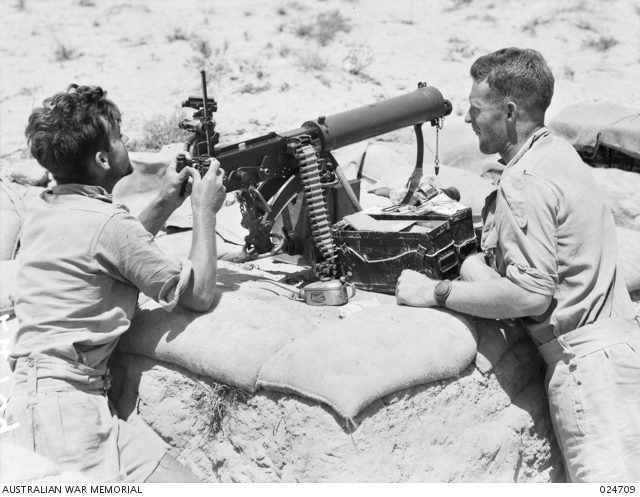
Leslie Frederick Hoy was born in 1905 in West Maitland. In 1941 he was 35 years old, working as a manager, serving in the militia, and divorced, though living with his eldest daughter, Enid Margaret Hoy, on Lord Street, Asquith. Leslie went on to serve in the Middle East, before taking on a role in Australia, training Australian soldiers who were to fight in the Pacific. He served for 1,899 days, of which 278 were overseas. Read more about his service here.
Lieutenant Maxwell Rose
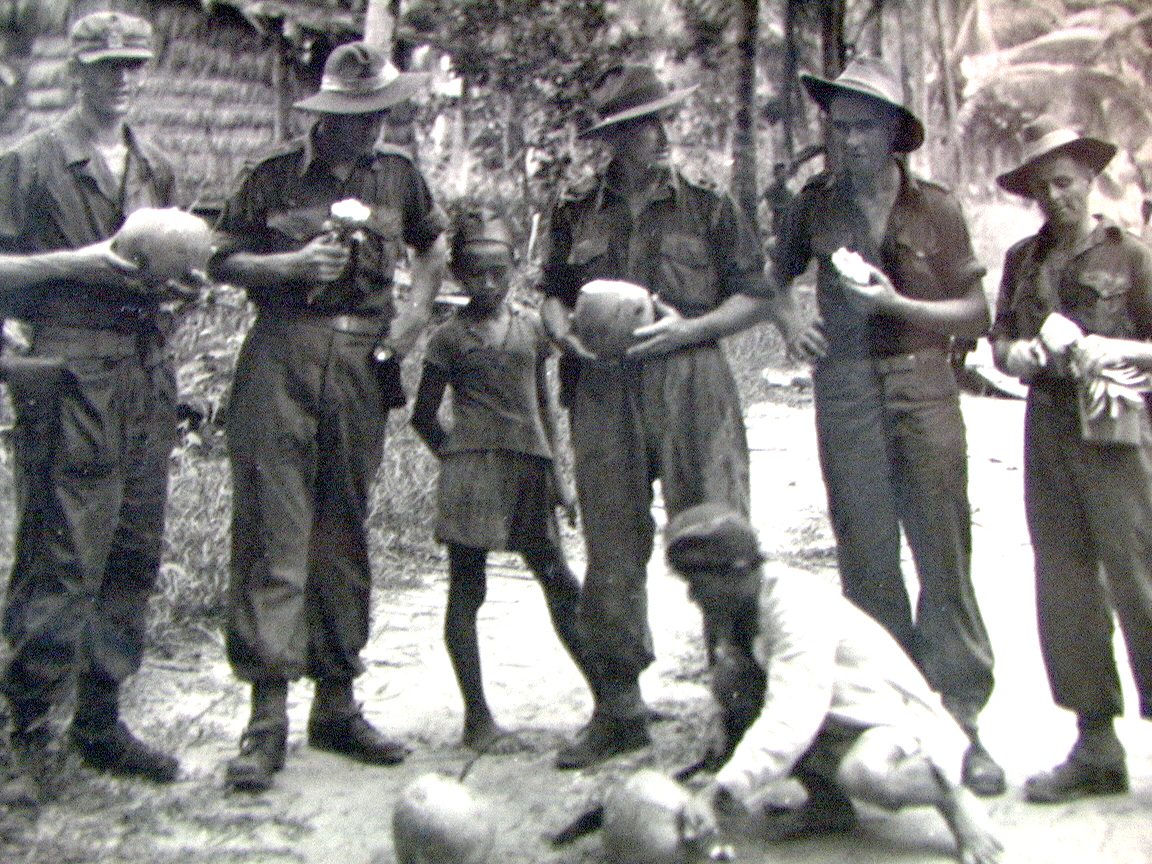
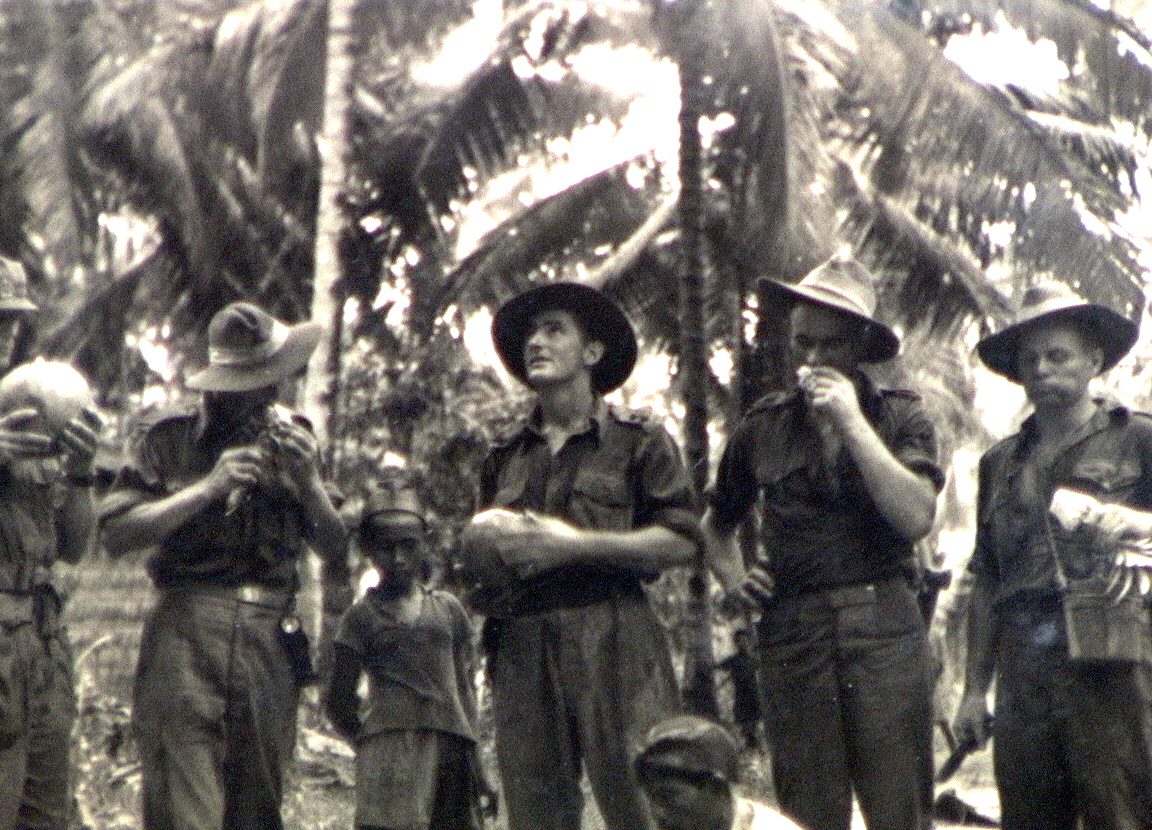
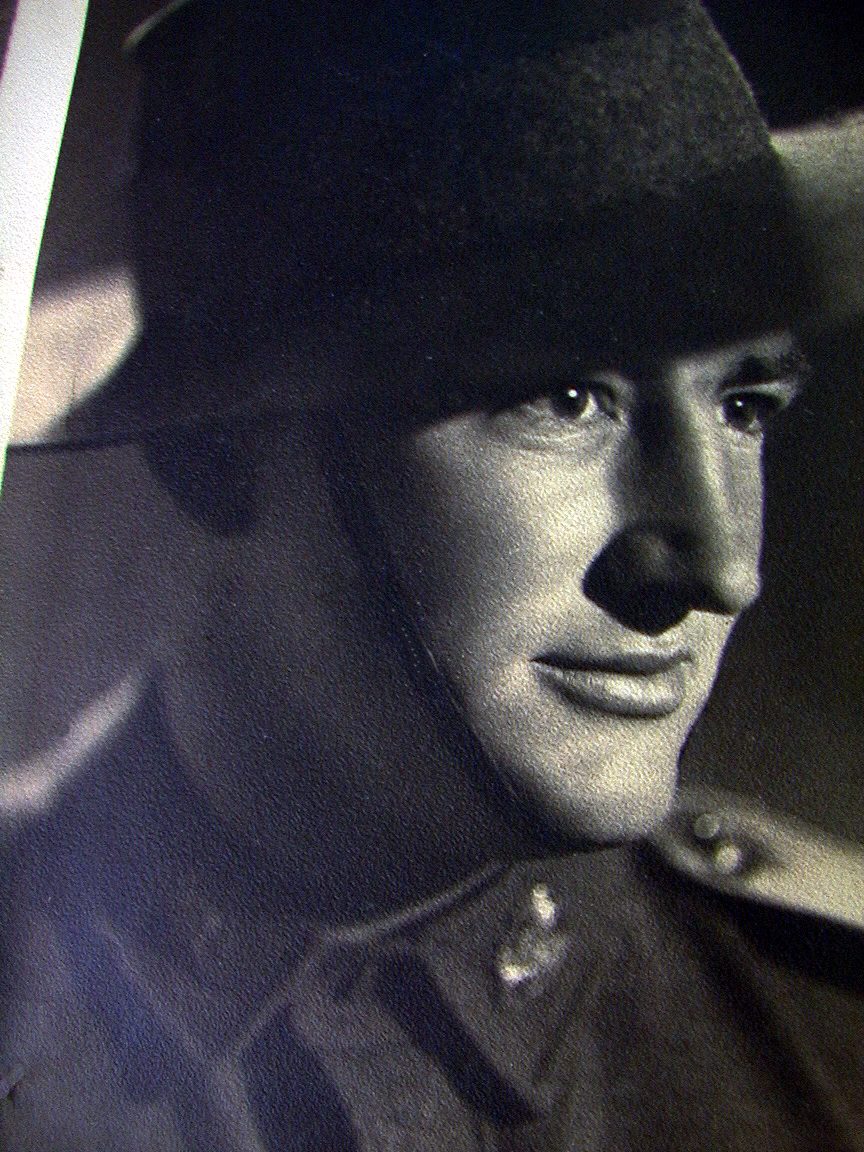
Maxwell Rose was an officer in the 2/1st Machine Gun Battalion during the Greek campaign, and later served as a commando in other theaters towards the end of the war. Max had been working for the Commercial Banking Company for six years when he decided to enlist in the AIF in March 1940. He was accepted for the air force in the first batch of the Empire Air Training Scheme. However, when he discovered that it was going to be a ten-month course in Sydney and thereafter he would be used as a training officer, that did not sit well with him: “That didn’t suit me because I thought the war, like everyone else, would be a glorious adventure, and… I turned around and went to Victoria Barracks, joined the army.” Following his transfer, Max was posted to the 2/1st Machine Gun Battalion.
In May 1940, Max was among the 4,700 troops who had left Sydney aboard the Queen Mary. When Italy entered the war in June 1940, the ship was diverted to Scotland. Max remembered troops being greeted by Sir Anthony Eden and the Mayor of Glasgow before proceeding to southern England, where they trained for four months. Once again, they went around the Horn of Africa, and this time through the Suez Canal. By the time Max and his unit reached the front, Bardia and Tobruk were already taken by British and ANZAC troops, so his first combat experience came in Greece.
On April 3rd, Max’s battalion reached Valos, a northern port in Greece. On April 6th, Greece was invaded. At the time, Max was in command of a machine gun unit. “We were the only ones to capture Germans; when I say we, I’m talking about the battalion, the only ones to catch Germans, and we got about 160 of them, all storm troopers, beautifully dressed, with highly polished boots, all laughing, knowing they would be released as soon as the big mob arrived, and these were the elite, the blokes that landed by plane… we rounded up 160 of these storm troopers, all well-dressed to impress, this is how the Germans worked to impress the local populace, how big and strong and how good they were, but we had to release them the following day.”
On ANZAC Day, Max and his mates were in a wine bar in Valos when they saw the ships they were supposed to get out of Greece on being blown apart by German airplanes. A retreat ensued all across Greece, and Max eventually managed to board the troop ship Costa Rica at the very south of the country. Of Max’s two brothers who served, one was in the air force, but the other was a doctor in the 2/5th AGH (Australian General Hospital) and was caught in Greece, “he was the last Australian officer to leave Greece, he was looking after the wounded and injured,” and was only released in Poland in July 1945.
Max was out of mainland Greece but not out of trouble. He described the situation: “The Costa Rica – was sunk and I was in a cabin down below with about eight others, and I was up on deck when this happened, we knew the ship was sinking and I raced down to get my pack where this diary was, and there was all blackness and the whoosh of the water coming through the ship, and the ship was listing, and I thought, ‘I will go down with this,’ and I was feeling my way and I borrowed some matches and I was striking a match and thought, ‘I’m sure I’m in the cabin about this far,’ and I stuck a match in this alleyway and there was a ship’s officer, a big pistol, a great big pistol, and he said, ‘Get up on top or I’ll blow your brains out,’ he thought I was looting. I said, ‘Bugger you I’ve got something, I’ve records in my cabin that I’ve got to get.’ He said, “What cabin?” I said, “It is along here about midway.’ He followed me down, and I got my diary and my pack and got back on deck. I had difficulty getting back on deck; this bloke stayed down below, and I couldn’t see a glimmer of light, and I thought, “Oh crikey I’m going to go down with this ship.” Eventually, Max managed to jump off the ship, but unfortunately, he lost the gear he risked his life to retrieve.
Although Max was promptly picked up by another ship, he was taken to Crete where he would face the Germans once more, only to evacuate again, this time to Alexandria. Following the Greek campaign, Max found himself serving in Syria, New Guinea, Borneo, and the Philippines. He was discharged in 1946 and said to have enjoyed the war since it was such an adventurous experience and he managed to see so much of the world. He even managed to keep one American Jeep (with a trailer) as a souvenir.
Podcasts about Australians in the Mediterranean during WWII
Did my Relative Serve in these Battles?
Hundreds of thousands of Australians served in the Mediterranean during the Second World War. Some families know what their relative experienced during this often very important part of their life, but many do not. History Guild has a project where our volunteers research the service history of Australians who served in the Mediterranean. We have had a lot of interest in this service and have a large backlog of research to get through, so it currently closed to new entries.
We hope to re-open this service once we have finished our research on the current set of Australian servicemen and servicewomen.
The text of this article was commissioned by History Guild as part of our work to improve historical literacy. If you would like to reproduce it please get in touch via this form.
